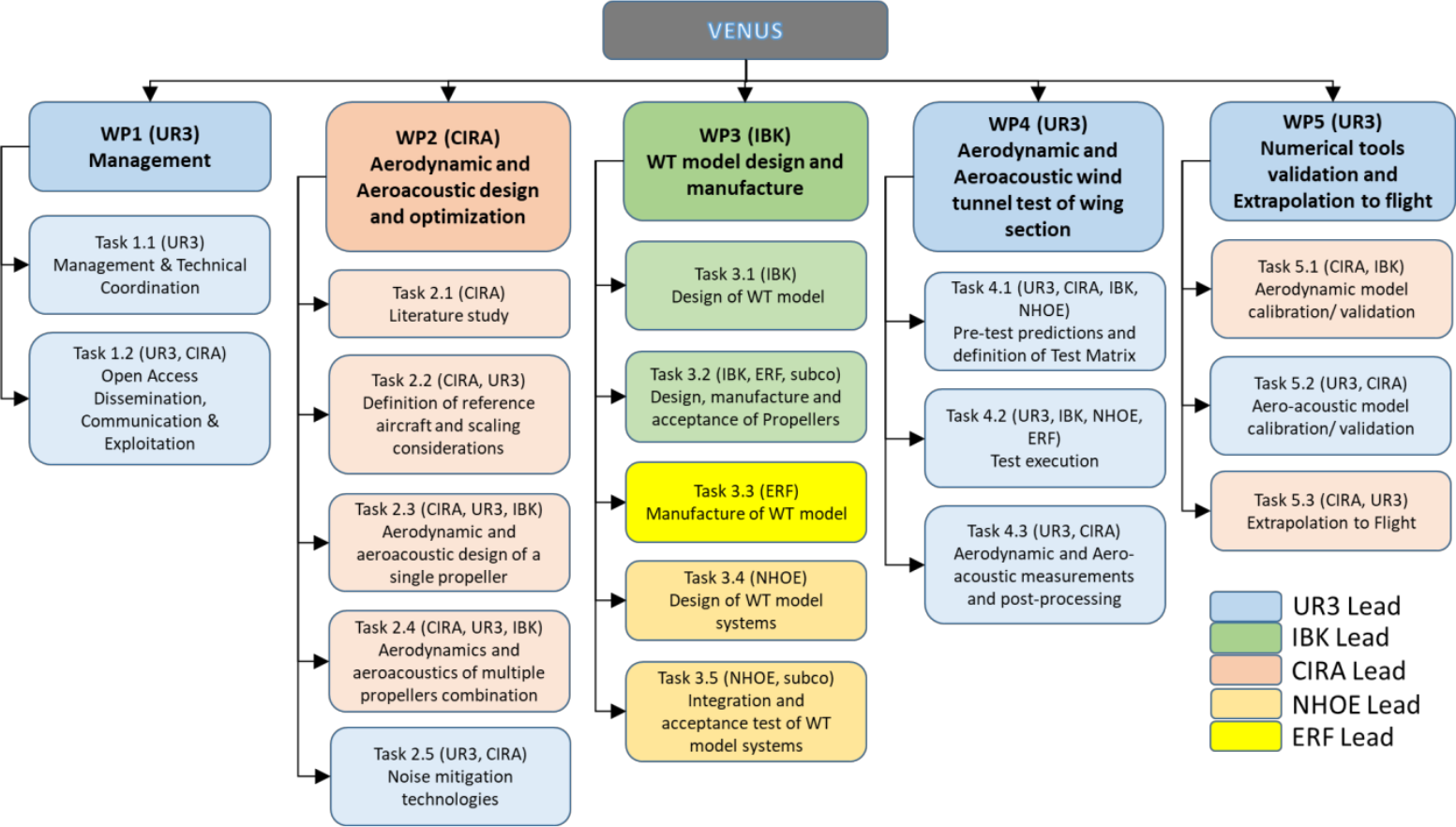VENUS
inVestigation of distributEd propulsion Noise and its mitigation through wind tUnnel experiments and numerical Simulations
Distributed Electric Propulsion (DEP), is one of the propulsion configurations that, taking advantage from the Distributed Propulsion concept, is believed to exploit the benefits of electrical engines to drastically reduce fuel consumption and emissions.
The consortium will develop methods and tools enabling a concurrent aerodynamic and aeroacoustic design of DEP configuration aircraft. The final step will consist in the experimental-numerical assessment of the numerical models. As a practical achievement, the study will support the design of a new regional aircraft configuration, in terms of wing and engines’ installation, to target a DEP which is optimized in terms of aerodynamic and aeroacoustic performance. It is pointed out that all the produced models, data and documents will be open access for other institutions, with the objective to establish an “open test-case” for the whole European scientific community, unique in the aircraft design landscape.
New tests on aircraft with distributed electric propulsion
Aircraft with distributed electric propulsion (DEP) could drastically reduce fuel consumption and harmful carbon emissions. The EU-funded VENUS project will contribute important knowledge on the aerodynamics and aeroacoustics performance of a wide range of DEP configurations through numerical simulations and experimental wind tunnel tests. The project’s outcomes should enhance the future design of such new regional aircraft. All produced models, data and documents will be freely available to research institutions. More aerodynamic and quieter planes mean less fuel, which translates not only to cost benefits and competitiveness but also to a lower impact on the environment.
Implementation
VENUS has been structured in 4 technical work-packages and a WP dedicated to Project Management, Dissemination and Exploitation activities. In order to organise activities, the work-packages are broken down in different tasks.







